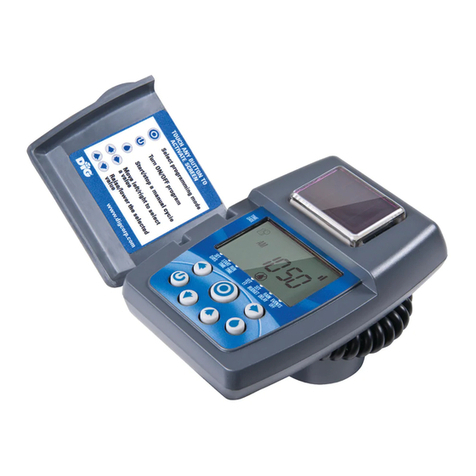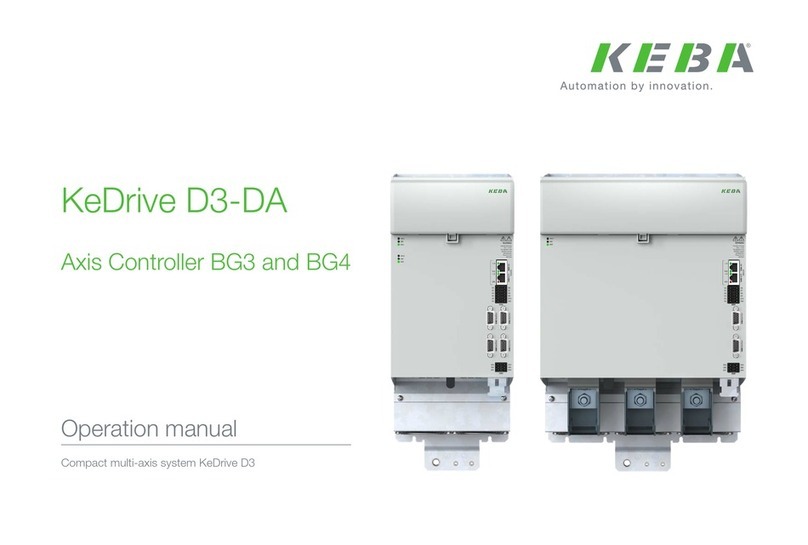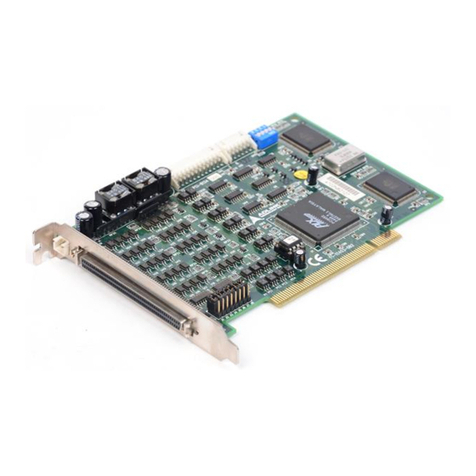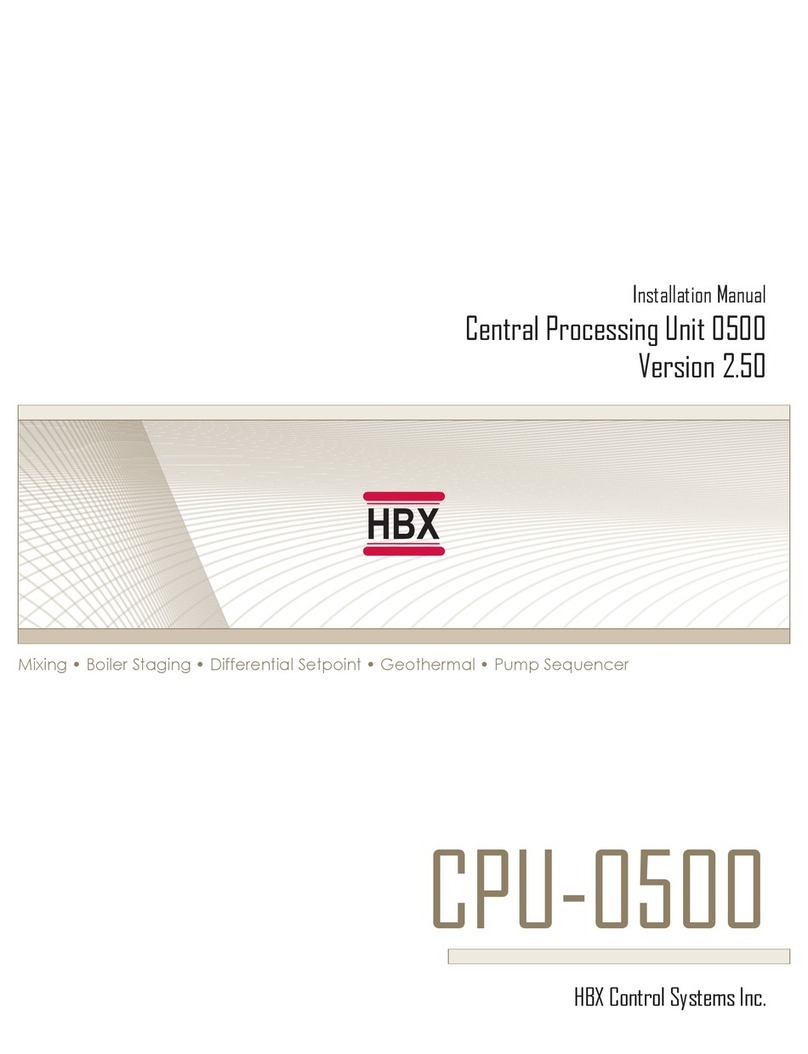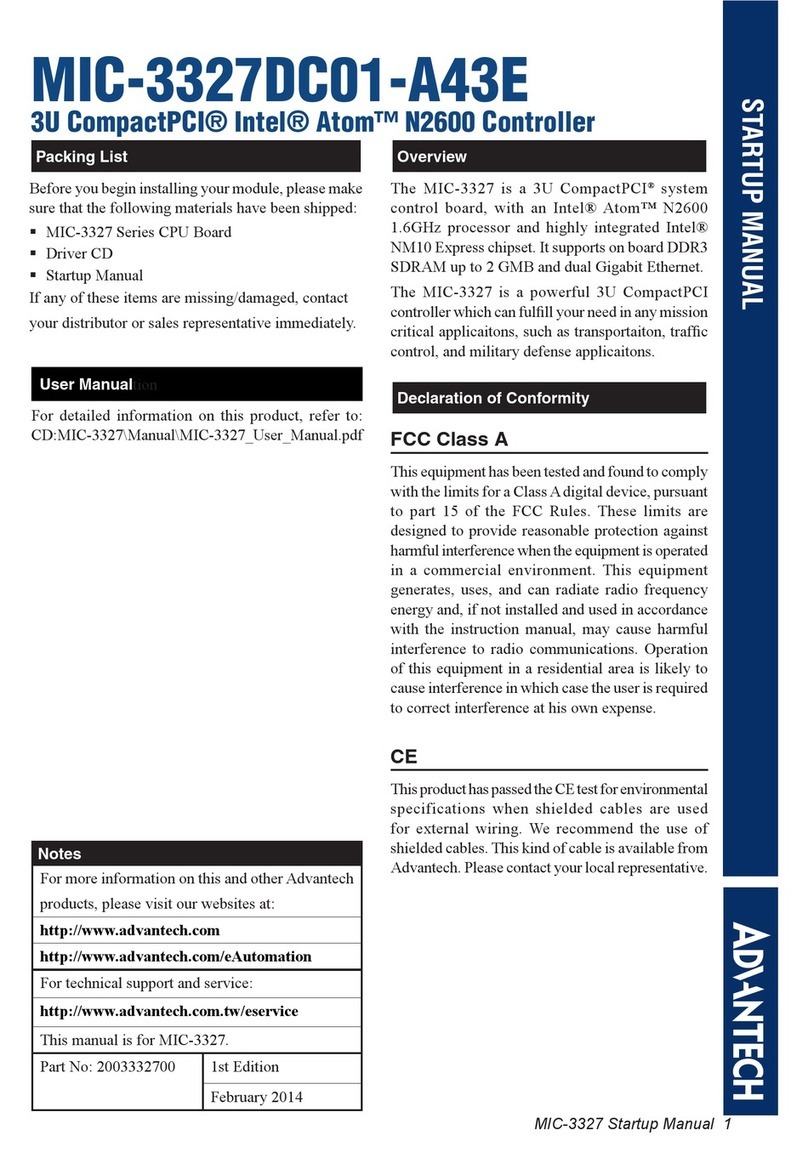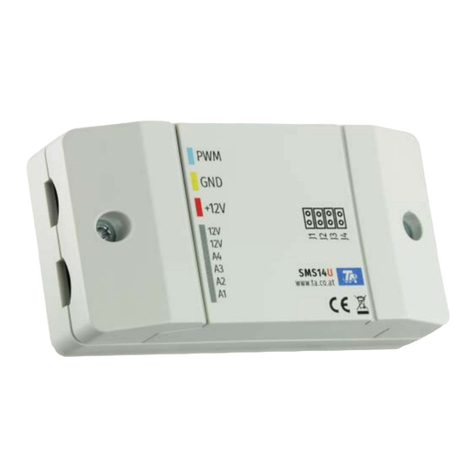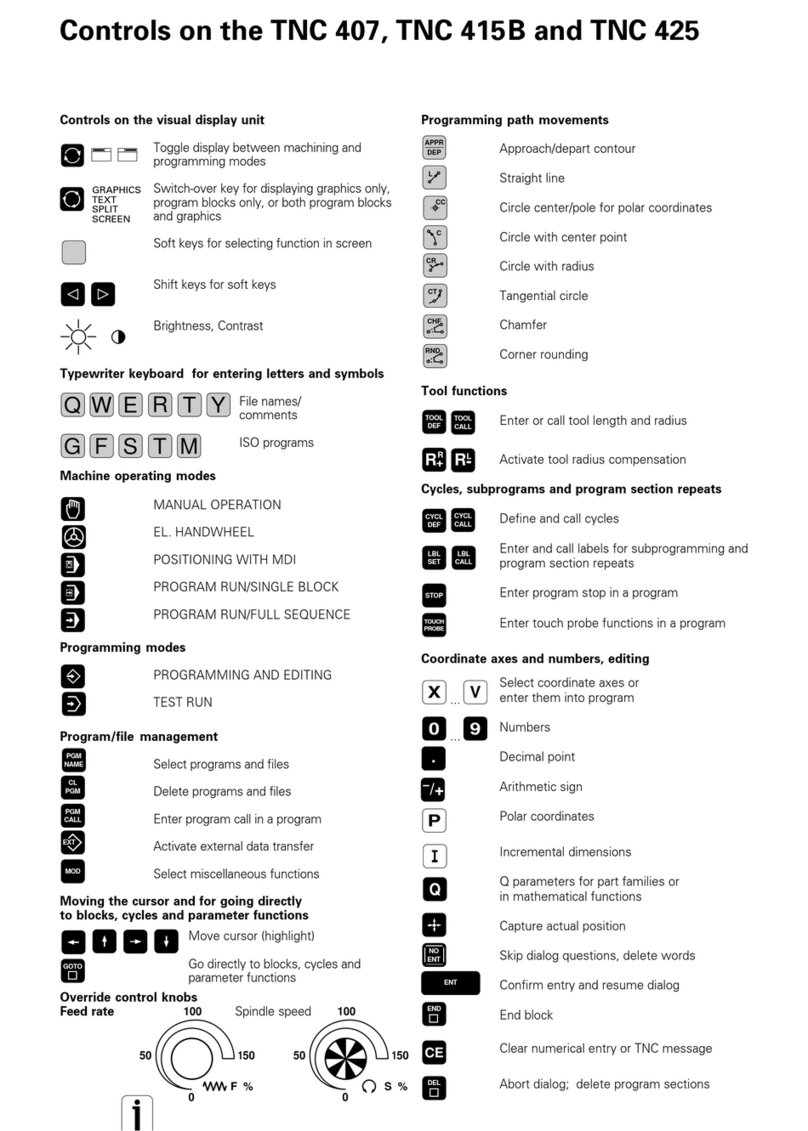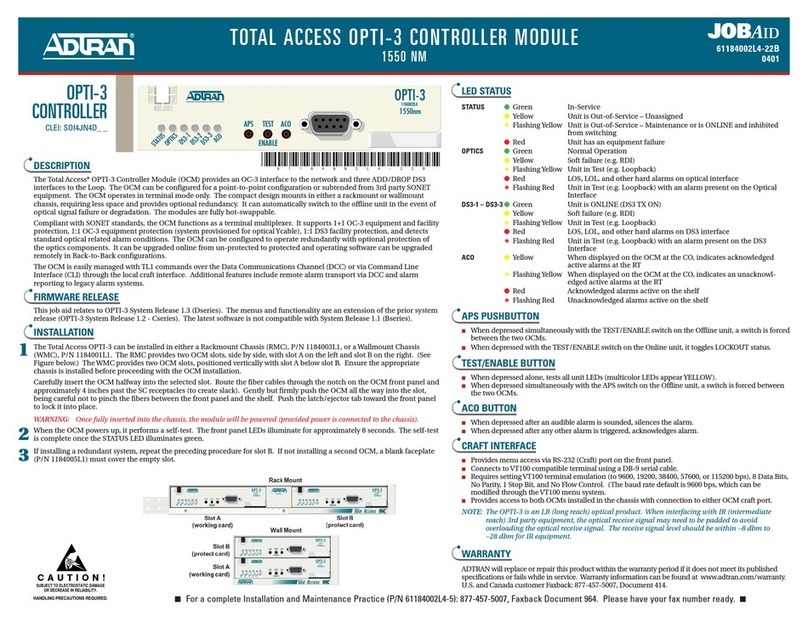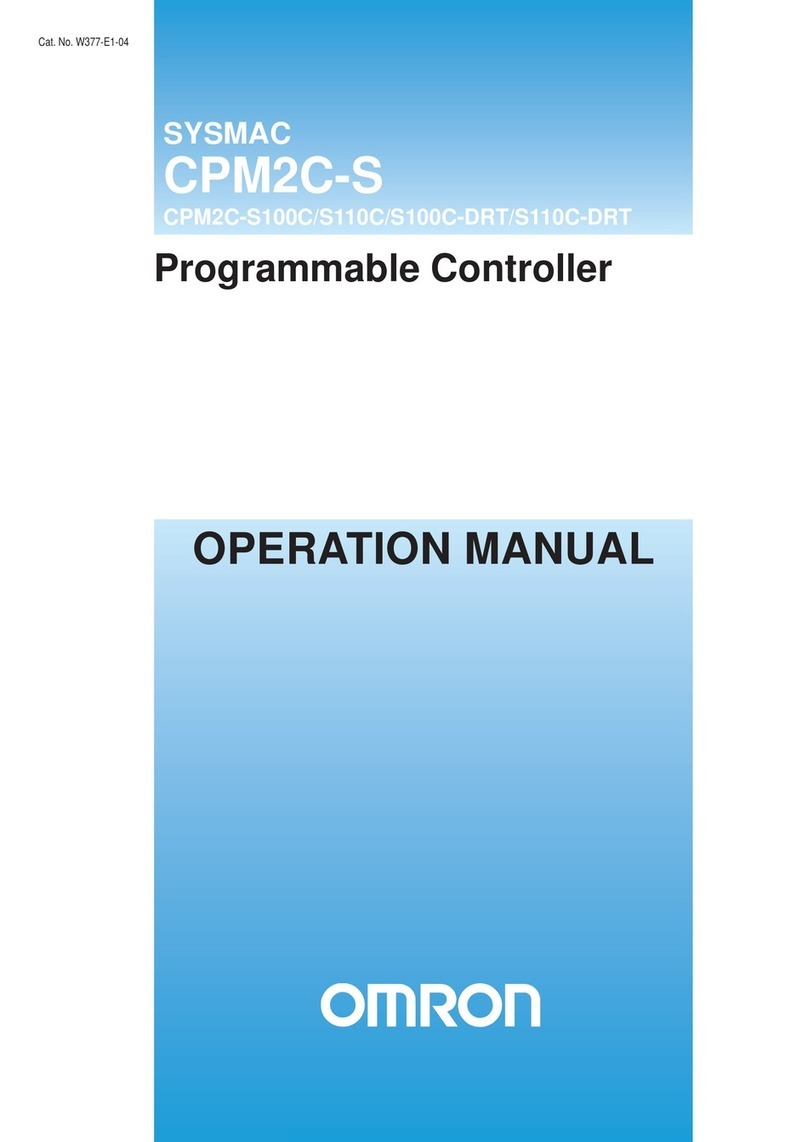Interroll 9006 User manual

User Manual
Interroll
9006 Hybrid Control for RollerDrive
EC100
EC110
EC120 (future)

Version 1.1 (11/2011) en
Original language
Manufacturer
Interroll Corporation
3000 Corporate Drive
Wilmington, NC 28405
Tel. 800 830 9680
Fax. 800 830 9679
www.interroll.us
Copyright
The copyright of this manual remains with Interroll Corporation. This manual
includes regulations and technical drawings which may not be copied or
duplicated either in whole or in part. Unauthorized use, publication, or application
of this document is prohibited.

1
Version 1.1 (11/2011) en
Original language
9006 Hybrid Control for RollerDrive
Table of contents
Table of contents
Introduction
Handling of the user manual . . . . . . . . . . . . . . . . . . . . . . . . . . . . . . . . . . . . 2
Warnings in this manual . . . . . . . . . . . . . . . . . . . . . . . . . . . . . . . . . . . . . . . 2
Further symbols . . . . . . . . . . . . . . . . . . . . . . . . . . . . . . . . . . . . . . . . . . . . . 3
Safety
General safety instructions . . . . . . . . . . . . . . . . . . . . . . . . . . . . . . . . . . . . . 4
Intended use . . . . . . . . . . . . . . . . . . . . . . . . . . . . . . . . . . . . . . . . . . . . . . . . 4
Unintended use . . . . . . . . . . . . . . . . . . . . . . . . . . . . . . . . . . . . . . . . . . . . . . 4
Qualified persons . . . . . . . . . . . . . . . . . . . . . . . . . . . . . . . . . . . . . . . . . . . . 5
Risks. . . . . . . . . . . . . . . . . . . . . . . . . . . . . . . . . . . . . . . . . . . . . . . . . . . . . . 5
Interfaces . . . . . . . . . . . . . . . . . . . . . . . . . . . . . . . . . . . . . . . . . . . . . . . . . . 5
Product information
Components . . . . . . . . . . . . . . . . . . . . . . . . . . . . . . . . . . . . . . . . . . . . . . . . 6
Dimensions . . . . . . . . . . . . . . . . . . . . . . . . . . . . . . . . . . . . . . . . . . . . . . . . . 7
ZPA technology. . . . . . . . . . . . . . . . . . . . . . . . . . . . . . . . . . . . . . . . . . . . . . 7
Product description . . . . . . . . . . . . . . . . . . . . . . . . . . . . . . . . . . . . . . . . . . . 9
Incline and decline applications. . . . . . . . . . . . . . . . . . . . . . . . . . . . . . . . . 10
Inputs and outputs . . . . . . . . . . . . . . . . . . . . . . . . . . . . . . . . . . . . . . . . . . 11
Peer-to-peer communication . . . . . . . . . . . . . . . . . . . . . . . . . . . . . . . . . . . 13
DIP switches . . . . . . . . . . . . . . . . . . . . . . . . . . . . . . . . . . . . . . . . . . . . . . . 14
Meaning of the LEDs. . . . . . . . . . . . . . . . . . . . . . . . . . . . . . . . . . . . . . . . . 16
9006 label . . . . . . . . . . . . . . . . . . . . . . . . . . . . . . . . . . . . . . . . . . . . . . . . . 17
Technical data. . . . . . . . . . . . . . . . . . . . . . . . . . . . . . . . . . . . . . . . . . . . . . 17
Speed settings . . . . . . . . . . . . . . . . . . . . . . . . . . . . . . . . . . . . . . . . . . . . . 18
Setting options and wiring diagrams . . . . . . . . . . . . . . . . . . . . . . . . . . . . . 20
Transport and storage
Transport . . . . . . . . . . . . . . . . . . . . . . . . . . . . . . . . . . . . . . . . . . . . . . . . . 36
Storage . . . . . . . . . . . . . . . . . . . . . . . . . . . . . . . . . . . . . . . . . . . . . . . . . . . 36
Assembly
Warning notices concerning assembly . . . . . . . . . . . . . . . . . . . . . . . . . . . 37
Warning notices concerning the electrical installation . . . . . . . . . . . . . . . . 37
Installing the 9006 in a conveyor system . . . . . . . . . . . . . . . . . . . . . . . . . . 38
Electrical installation . . . . . . . . . . . . . . . . . . . . . . . . . . . . . . . . . . . . . . . . . 38
Initial startup and operation
Initial startup . . . . . . . . . . . . . . . . . . . . . . . . . . . . . . . . . . . . . . . . . . . . . . . 39
Operation . . . . . . . . . . . . . . . . . . . . . . . . . . . . . . . . . . . . . . . . . . . . . . . . . 39
Procedure in case of accident or malfunction . . . . . . . . . . . . . . . . . . . . . . 39
Maintenance and cleaning
Warnings concerning maintenance and cleaning. . . . . . . . . . . . . . . . . . . . 40
Maintenance . . . . . . . . . . . . . . . . . . . . . . . . . . . . . . . . . . . . . . . . . . . . . . . 40
Cleaning . . . . . . . . . . . . . . . . . . . . . . . . . . . . . . . . . . . . . . . . . . . . . . . . . . 40
Troubleshooting
Error search . . . . . . . . . . . . . . . . . . . . . . . . . . . . . . . . . . . . . . . . . . . . . . . 41
Abandonment and disposal
Abandonment . . . . . . . . . . . . . . . . . . . . . . . . . . . . . . . . . . . . . . . . . . . . . . 45
Disposal . . . . . . . . . . . . . . . . . . . . . . . . . . . . . . . . . . . . . . . . . . . . . . . . . . 45
Appendix
Accessories . . . . . . . . . . . . . . . . . . . . . . . . . . . . . . . . . . . . . . . . . . . . . . . 46
Glossary . . . . . . . . . . . . . . . . . . . . . . . . . . . . . . . . . . . . . . . . . . . . . . . . . . 47
Manufacturer's declaration . . . . . . . . . . . . . . . . . . . . . . . . . . . . . . . . . . . . 49

2Version 1.1 (11/2011) en
Original language
Introduction
9006 Hybrid Control for RollerDrive
Introduction
Handling of the user manual
In this manual the 9006 Hybrid Control for RollerDrive for the EC100, EC110,
EC120 is referred to as 9006.
Content of the manual This manual contains important advice, notes, and information about the
9006 in all phases of its lifecycle:
• Transport, assembly, and commissioning
• Safe operation, maintenance, troubleshooting, and disposal
• Accessories
Validity of the manual The manual describes the 9006 as it is delivered by Interroll.
Special application designs require validation from Interroll and additional
technical instructions.
This manual is part of the
product
For trouble-free, safe operation and warranty claims, read this manual and
follow the instructions before handling the 9006.
Keep this manual near to the 9006.
Pass this manual on to any subsequent operator or occupant of the
9006.
Interroll does not accept any liability for malfunctions or defects due to non-
observance of this manual.
If you have any questions after reading this user manual, feel free to contact
our customer service. See the last page for contact information.
Warnings in this manual
The warnings in this document refer to risks which may arise while using the
9006. For relevant warnings, see "Safety", page 4 and the warnings
at the beginning of each chapter.
There are three categories of danger. The following signal words are used in the
document as required:
• Danger
• Warning
• Caution
Structure of warnings
Signal word Meaning
Danger Indicates a hazardous situation which, if not
avoided, will result in death or serious injury.
Warning Indicates a hazardous situation which, if not
avoided, could result in death or serious injury.
Caution Indicates a hazardous situation which, if not
avoided, may result in minor or moderate injury.
Nature and source of the hazard
Possible consequence of non-observance
Information about how to avoid the hazard.
DANGER

3
Version 1.1 (11/2011) en
Original language
9006 Hybrid Control for RollerDrive
Introduction
Further symbols
This symbol marks the steps that have to be carried out.
This symbol identifies possible material damage.
Information about how to avoid damage.
Important
This symbol displays safety instructions.
Hint
This symbol marks useful and important information.

4Version 1.1 (11/2011) en
Original language
Safety
9006 Hybrid Control for RollerDrive
Safety
General safety instructions
The 9006 is designed according to the technical state of the art and is
reliable in operation, once distributed. However, risks may still arise.
• Risks of physical injury to the user or bystanders.
• Adverse effects of the 9006 and other material.
Always read the entire operating and safety instructions before starting to
work with the 9006 and follow the information contained herein in full.
Only instructed and qualified persons may work with the 9006.
Always keep this user manual at hand when working on the 9006 so
that you can consult it quickly if required.
Always comply with relevant national safety regulations.
If you have any questions after reading this user manual, feel free to contact
our customer service. See the last page for contact information.
Intended use
The 9006 may only be used for industrial applications and in an
industrial environment to control a RollerDrive EC1xx. It must be integrated in a
conveyor module or a conveying system. Any other use is considered
inappropriate.
Use of the 9006 is only allowed in the areas described under product
information.
Any changes that affect the safety of the product are not allowed.
The 9006 may only be used within the given operation limits.
Unintended use
Applications not according to the intended use of the 9006 require
approval from Interroll.
Important
Disregarding the warnings in this manual may lead to serious injury.

5
Version 1.1 (11/2011) en
Original language
9006 Hybrid Control for RollerDrive
Safety
Qualified persons
Qualified persons are persons who read and understand the manual and, taking
national regulations into account, can competently execute incidental work.
Only instructed and qualified persons may work with the 9006, taking the
following into account:
• the relevant manuals and diagrams,
• the warning and safety instructions in this manual,
• the system specific regulations and requirements,
• national or local regulations and requirements for safety and accident
prevention.
Risks
Persons Maintenance or repair work must only be executed by authorized and qualified
persons in accordance with the applicable regulations.
Before using the 9006, ensure that no unauthorized persons are near
the conveyor.
Electricity Only perform installation and maintenance work after you have switched off
the power. Ensure that the power cannot be turned on accidentally.
Working environment Do not use the 9006 in explosive atmospheres.
Remove equipment or material which is not required from the workspace.
Avoiding malfunctions in
operation
Regularly check the 9006 for visible damage.
In case of fumes, turn off the power at once and ensure that it cannot be
turned on accidentally.
Contact qualified personnel immediately to find the source the malfunction.
Maintenance As the product is maintenance free, you only need to check regularly for
visible damage and that all leads and screws are still tightened.
Interfaces
By assembling the 9006 in a conveyor module, potential hazards may
occur. These are not described in this manual and have to be analyzed during the
design, installation, and startup of the conveyor module.
After assembling the 9006 in a conveyor module, check the whole
system for any new potential dangerous condition prior to turning on the
conveyor.
Important
The following list informs you about the various types of danger or damage that
may occur while working with the 9006.

6Version 1.1 (11/2011) en
Original language
Product information
9006 Hybrid Control for RollerDrive
ProdThe ybridControl has ZPA and motor control functionality on board. If no peer-to-peer port is connected and DIP switches 4 and 5 are set to OFF, it switches automatically from ZPA-mode to motor control mode only.uct infor
The 9006 has ZPA and motor control functionality on board. If no
peer-to-peer port is connected and DIP switches 4 and 5 are set to OFF, it
switches automatically from ZPA-mode to motor control mode only.
Components

7
Version 1.1 (11/2011) en
Original language
9006 Hybrid Control for RollerDrive
Product information
Dimensions
Mounting hardware The following mounting hardware is supplied:
• 2x button head screw 10-32 UNF x 0.5"
• 2x nut with captive star washer 10-32 UNF
ZPA technology
ZPA is short for zero pressure accumulation. The 9006 provides true
zero pressure accumulation and other control options to a conveyor system.
Each 9006 controls a RollerDrive unit, which in turn drives idler rollers
using O-rings or other belts. The 9006, the RollerDrive, and the idler
rollers (with associated sensors and switches) are assembled into a short
conveyor section – a zone.
Zero pressure accumulation occurs as zones hold packages until the next
downstream zone clears its sensor. When accumulation occurs, a low signal is
passed upstream until each consecutive zone is occupied. Packages never push
each other, and no line pressure occurs.
A logic-controlled, zero pressure conveyor is created when a number of zones
are connected together and a simple six-wire phone cable links each
9006 electronically. The RollerDrives only operate when a package is
detected by a photoeye. If the downstream zone is empty, the package moves
forward.

8Version 1.1 (11/2011) en
Original language
Product information
9006 Hybrid Control for RollerDrive
Principle of zones
Zone A has a package at the photoeye. The 9006 of zone A
recognizes its presence, checks zone B for availability and requests permission
to transfer the package to zone B. Since zone B has also a package, its
9006 denies the permission until this package has been transfered to
zone C (singulation mode), or has at least started being transfered (enhanced
singulation mode). The singulation method depends on the setting of DIP switch
SW3.
The 9006 of zone A will only start to operate the RollerDrives in its
zone after it gets permission from the 9006 of zone B.
1Zone
2Direction of travel
3Load
4RollerDrive
5Photoeye
6HC-DriveControl
7Peer-to-peer communication cable
8+24 VDC / GND

9
Version 1.1 (11/2011) en
Original language
9006 Hybrid Control for RollerDrive
Product information
Product description
Features •Zone-to-zone communication: Activities in upstream and downstream zones
are monitored by photoeyes to permit control in various situations.
• Learn Mode: During system startup, the 9006 will automatically set the zone
length and save it, simply by running an object from the upstream photoeye
to the downstream photoeye.
•Diagnostics: LEDs provide motor, sensor, and jam diagnostics as well as
power, fuse, and temperature status.
•Reverse or jog entire system: Switch settings and connections on the board
allow the user to reverse the zone-to-zone logic, jog the entire system, or
reverse or jog parts of the system, or bypass those functions altogether
(default) without the use of external cards.
•NPN or PNP: All inputs and outputs can be switched, collectively, for NPN or
PNP with one switch. Only "No fault output" is always active high (failsafe
function with 24 VDC in "No fault status").
• Multiple dependent RollerDrives in one zone: Up to three RollerDrives can
be run from one 9006 (and two dependent cards) to achieve
multiple RollerDrives in a single zone. This signal can also be used by a PLC
as a "motor running" status input.
•Smart braking: Depending on upstream and downstream zone occupancy,
the RollerDrive will brake if needed, and coast if no braking is required. This
saves on power, heat, and vibration in the RollerDrive and ultimately in the
system. When no photoeyes are blocked in the system, all RollerDrives are in
coast mode.
•Dynamic braking: RollerDrive acts like a generator and the 9006 feeds
back current into the RollerDrive windings.
•Zero motion hold: When the 9006 has no start signal, the RollerDrive
will be held in place.
•Advanced braking: The combination of dynamic braking followed by zero
motion hold provides superior braking and holding for many applications.
Operation modes The operation modes of a RollerDrive conveyor with 9006 Hybrid Controls include:
•Standby: The RollerDrives are turned off if the zone is empty.
•Accept: When a load reaches the sensor at the upstream end of the zone, the
RollerDrives turn on to accept it.
•Transfer: The RollerDrives continue to run to ensure that the load entering
the upstream end of the zone is transferred to the downstream end. This
creates a smooth transition and high throughput.
•Discharge: The RollerDrives in the zone continue running to discharge the
load if no accumulation command is received from the downstream zone.

10 Version 1.1 (11/2011) en
Original language
Product information
9006 Hybrid Control for RollerDrive
Safety and stall functions There are different levels of over-temperature or stall-related functions:
•Jam protection: If the 9006 detects a jam or obstruction at the
downstream end of the zone, it sends an accumulation signal to the upstream
zone, preventing a build-up of accumulation pressure that could cause
product damage or personal injury.
•Motor temperature foldback: At a motor temperature of 80 °C (176 °F) the
9006 will fold back peak current down to continuous current. This is
indicated by the amber LED lighting up constantly. When the RollerDrive cools
down, the amber LED extinguishes, and the maximum peak current is now
possible again. The motor can run at this reduced current limit indefinitely
without harming the 9006 or the motor.
•Motor temperature shutdown: At a motor temperature of 100 °C (212 °F)
the 9006 will shut down the motor and the motor will go into
dynamic braking. This is indicated by the red led flashing five times. When the
RollerDrive cools back down, the red LED stops flashing and motor operation
will resume.
•Motor stall current limiting: When the motor is stalled, the current will fold
back to 1.4 A until the stall is cleared.
•9006 temperature foldback: At a card temperature of 70 °C (158 °F)
the 9006 will foldback peak current down to continuous current. This is
indicated by the amber LED lighting up constantly. When the 9006
cools down, the amber LED extinguishes, and the maximum peak current is
now possible again. The 9006 can run at this reduced current limit
indefinitely without harming the 9006 or the motor.
•9006 temperature shutdown: At a 9006 temperature of
90 °C (194 °F) the 9006 will shutdown the motor and the motor will go
into dynamic braking. This is indicated by the red LED flashing four times.
When the 9006 cools back down the red LED stops flashing and motor
and 9006 operation will resume.
Incline and decline applications
Due to the zero motion hold and regenerative braking features, the
9006 and RollerDrive EC1xx can be used for incline and decline
applications up to an angle of 15°.

11
Version 1.1 (11/2011) en
Original language
9006 Hybrid Control for RollerDrive
Product information
Inputs and outputs
Power input and I/O
connections
8Speed analog input: External speed control down to approximately 33% of
the maximum speed. When using a 10 kΩ external potentiometer, the wiper
must be connected here. The on-board rotary switch should be set to
maximum (CW) so it will not affect the external speed setting (for the wiring
diagrams see page 19).
7Sensor out: Mimics the Sensor 1 input signal from pin 4 on the sensor
connection. Unchanged by zone type. (see sensor connections page 12).
6Smart 1 / FWD input: Has various functions depending on zone type:
• In entry zone: acts as a start signal for the handshake with previous
machines or conveyors.
• In exit zone: acts as a start signal to discharge the conveyor as
handshake to following systems.
• In transport zone: acts as jog signal for the specific zone or the whole
conveyor (depending on the DIP switch settings)
• In dependent zone: acts as jog command to run the motor.
This input is PNP/NPN selectable (with DIP switch 1).
5REV input: Invokes the system reverse function, causing all interconnected
controls to operate in reverse transport mode while the signal is active.
When in dependent mode, the motor will simply run in reverse while this
signal is active. This input is PNP/NPN selectable (with DIP switch 1).
4No fault output: Active high (+24 VDC) when either in NPN or PNP mode.
Signal goes low only when system faults occur.
3Smart 1 output: Has various functions depending on zone type:
• In entry zone: reflects the status of the zone (occupied or free) for
handshake with previous systems.
• In exit zone: reflects the status of the zone (occupied or free) for
handshake with following systems.
• In transport zone: is the connection to control a second RollerDrive in the
zone by interfacing with Smart 1 IN of the dependent zone.
• In dependent zone: reflects the status of the sensor.
This output is PNP/NPN selectable (with DIP switch 1).
2Common ground input: Must be connect to the main power ground.
1+24 VDC input: Main power supply 24 VDC (voltage range see "Technical
data", page 17).

12 Version 1.1 (11/2011) en
Original language
Product information
9006 Hybrid Control for RollerDrive
Sensor connection
6Accum (L-stop) input: An active signal (NPN/PNP switchable) on this
terminal input will cause the 9006 to accumulate in this zone until
the signal is removed. A manual switch or a PLC controller can provide the
signal referenced to a common DC ground (NPN) or +24 VDC (PNP). This
input is PNP/NPN selectable (with DIP switch 1).
5Sensor 2 input: Used as a start sensor. It is located at the upstream edge of
the zone and tells the first zone in a conveyor to run. This input is PNP/NPN
selectable (with DIP switch 1).
4Sensor 1 input: Located at the downstream edge of the zone. This input is
PNP/NPN selectable (with DIP switch 1).
3Motor run output: Output to tell PLC that the motor is running.
Unchanged by zone type. This input is PNP/NPN selectable (with DIP switch 1).
2Sensor common ground output: Power ground connection for sensor 1 and
sensor 2.
1Sensor +24 VDC output: +24 VDC power supply for sensor 1 and sensor 2.
Hint
The 9006 is protected against reverse polarity, but the power supply
must provide a short circuit or over current protection and a voltage ripple
tolerance of less than 5%.
Hint
Only the sensors mentioned below may be chosen: (sensor supply current from
the board is 50 mA max)
• NPN retro reflective (reflector required) - dark operate, normally closed (NC)
contact
• NPN diffused (no reflector) - light operate, normally open (NO) contact
• PNP retro reflective (reflector required) - dark operate, normally closed (NC)
contact
• PNP diffused (no reflector) - light operate, normally open (NO) contact

13
Version 1.1 (11/2011) en
Original language
9006 Hybrid Control for RollerDrive
Product information
Peer-to-peer communication
Even though all of the external inputs and outputs are NPN and PNP switchable,
the 9006 peer-to-peer communications always use NPN TTL logic.
This means that if a signal passing from board to board is high, it is not in
operation. If it is low (grounded), it is either performing its designated function or
sending the function signal to a nearby board.
All logic operates from a regulated and filtered 5 VDC power supply on the
9006. The 5 VDC power is delivered by a converter on the board
which converts the 24 VDC power that the board receives into 5 VDC for the
internal logic and peer-to-peer board communications (For communication cable
hardware see "Accessories", page 46).
Downstream peer-to-peer
6Jog (I/O) [left]
5Reverse (I/O)
4Accumulation (I/O)
3B sensor (OUT)
2Ground
1NPN (IN) [right]
Upstream peer-to-peer
1Jog (I/O) [right]
2Reverse (I/O)
3Accumulation (I/O)
4C sensor (IN)
5NPN (IN)
6Ground [left]
Hint
While different segments of a system may operate at different input voltages, the
DC ground for each system must be held at the same potential (0 VDC) to ensure
good operation and clean signals. In other words, when multiple power supplies
are used, the DC grounds must always be connected together.
Hint
When a peer-to-peer port is connected to another ZPA product, the NPN (in)
signal is pulled low except for the case where a 9006 is upstream.

14 Version 1.1 (11/2011) en
Original language
Product information
9006 Hybrid Control for RollerDrive
DIP switches
The DIP switches allow the selection of various types of control operations. The
default DIP switch settings are all OFF. This would provide:
• RollerDrive selection of an EC100 (SW6, SW7)
• Standard 9006 connectivity upstream and downstream (SW4, SW5)
•Standard singulate mode (SW3)
• Motor running counter clockwise (SW2)
• All NPN inputs and outputs (SW1)
The following table shows the switch position for different situations:
Hint
DIP switch settings are read at reset (power-up) only.
DIP switch ON (up position OFF (down position)
SW5
Downstream
Jog/Rev ON: the downstream
peer-to-peer cable is connected
to another 9006 and
the jog/reverse signal is
transmitted
Standard: the jog/reverse
signal is not transmitted
SW4
Upstream
Jog/Rev ON: the upstream
peer-to-peer cable is connected
to another 9006 and
the jog/reverse signal is
transmitted
Standard: the jog/reverse
signal is not transmitted
SW3
Singulation
Enhanced: enhanced
singulated release (see
"Glossary", page 47) is needed
Standard: singulated release
(see "Glossary", page 47) is
needed
SW2
Rotation
Clockwise: (rotation of the
RollerDrive seen from the cable
end)
Counter clockwise: (rotation
of the RollerDrive seen from
the cable end)
SW1
Logic
PNP: all external inputs,
photoeye inputs and outputs
are active high (24 VDC)
NPN: all external inputs,
photoeye inputs and outputs
are active low (0 VDC
ground).
This excludes the "No fault
output" which is always active
high (+24 VDC) when in either
NPN or PNP mode.

15
Version 1.1 (11/2011) en
Original language
9006 Hybrid Control for RollerDrive
Product information
• Local jog and reverse are always enabled, but upstream and downstream
propagation are controlled by DIP switch 4 and DIP switch 5 respectively.
• It is now simple to use DIP switch 4 and DIP switch 5 to define jog/reverse
groups, or to defeat jog and reverse completely (recommended whenever not
in use).
• If the RollerDrive is mounted with the cable exiting the opposite side of the
conveyor frame, switch SW2 has to be set in the opposite position to maintain
equal direction of travel.
• For special cases see "Setting options and wiring diagrams", page 20
Rotary switches (16 position)

16 Version 1.1 (11/2011) en
Original language
Product information
9006 Hybrid Control for RollerDrive
Meaning of the LEDs
The LEDs provide motor, sensor, and jam diagnostics as well as power, fuse, and
temperature status. The following table shows the meaning of the LEDs (flashes
are ¼ second on, and ¼ second off, in a fixed 4 second time period):
LED Color Status Meaning
Fuse red on steady (all other
LEDs are off)
Fuse blown
Power green on steady Power ok
Fault red on steady Stalled motor
Jam at or between sensors
flashing once Motor or motor cable open or
disconnected
flashing twice Over-voltage detection
29 VDC ± 0.2 VDC (will cease
normal operation)
flashing three times Under-voltage detection
19 VDC ± 0.2 VDC (will cease
normal operation)
flashing four times 9006 severe temperature
shut-down (will cease normal
operation until cool)
flashing five times Motor severe temperature shut-
down (will cease normal
operation until cool)
flashing six times Low gain or bad sensor (sensor
with fault output connected)
Warning amber on steady Motor current is limited to
maximum continuous current due
to motor over-temperature
flashing four times Motor current is limited to
maximum continuous current due
to card over-temperature
Hint
There is no error output if the amber LED is flashing.

17
Version 1.1 (11/2011) en
Original language
9006 Hybrid Control for RollerDrive
Product information
9006 label
The specifications on the 9006 label are used to identify the
9006. This is required to use the 9006 as intended.
Technical data
1
2
3
4
5
6
1
2
3

18 Version 1.1 (11/2011) en
Original language
Product information
9006 Hybrid Control for RollerDrive
Speed settings
On board speed setting The speed can be continuously adjusted (between 100% and 33% for the
EC100, EC110, and EC120) by the rotary switch marked "speed" on the
9006. Default setting is maximum.
Hint
If more than one 9006 has to run with reduced speed, it is recommended
to set the speed externally (by PLC or external potentiometer; see "External
speed setting", page 19).
Table of contents
Other Interroll Controllers manuals
Popular Controllers manuals by other brands

Emerson
Emerson AS1-FRE Series RE-ASSEMBLY INSTRUCTIONS

FGH
FGH Series1000 Operator's manual
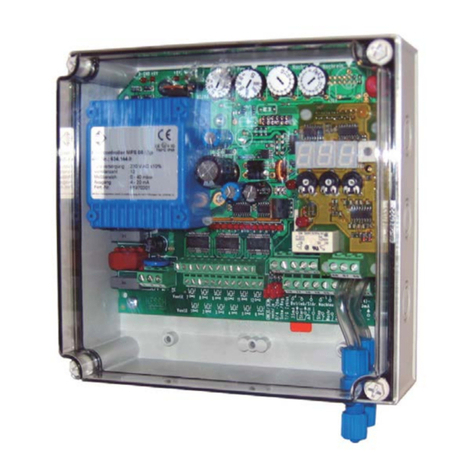
Filtration Group
Filtration Group MFS-05 Translation of the original instructions

Casambi
Casambi NB. 1 quick start guide
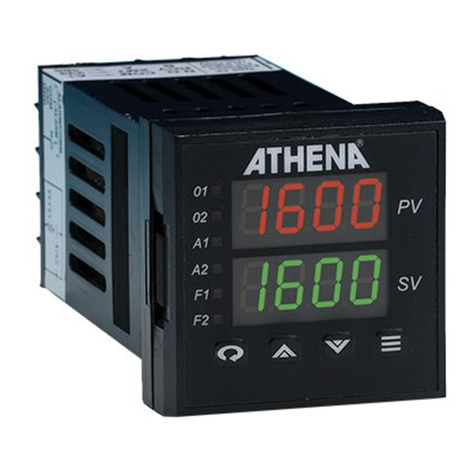
Athena Controls
Athena Controls 16C Series Operation manual
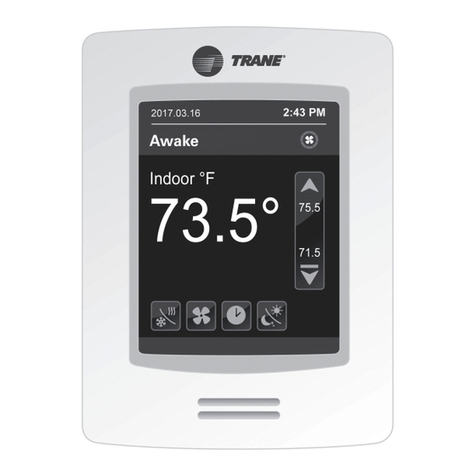
Trane
Trane Tracer UC400 installation guide

